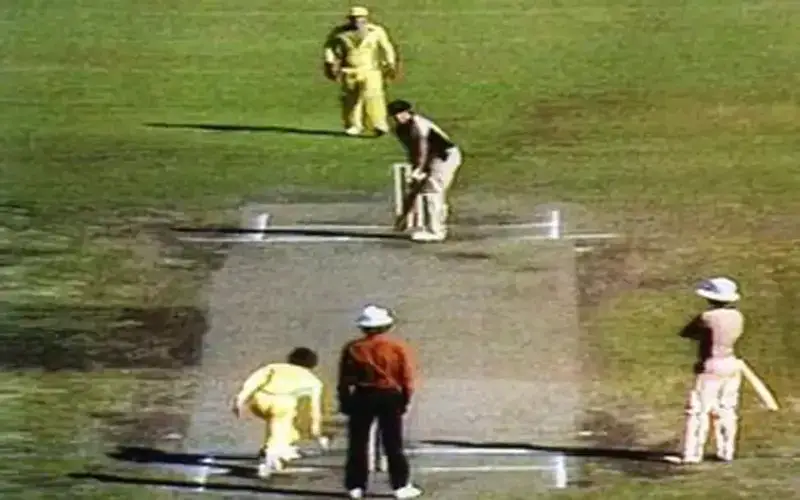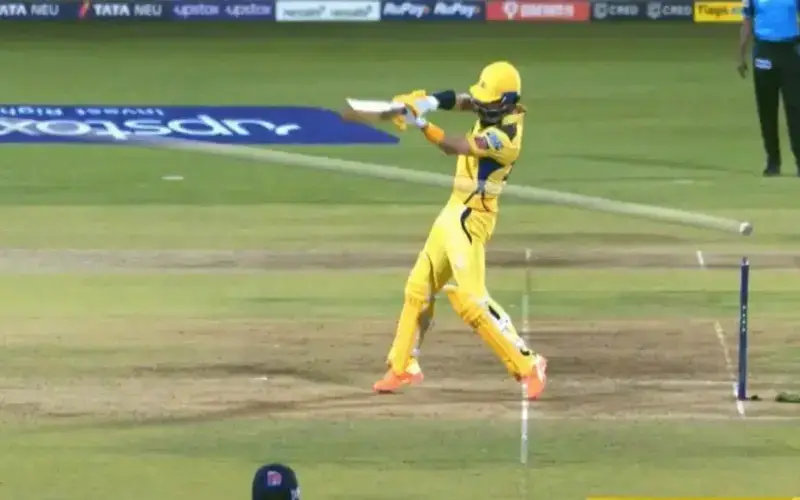Over the years, the cricketing world has seen plenty of controversies on and off the field. While many of them happen due to questionable decisions taken by players and umpires, some of them are much more deeply rooted in the game. At times, the rules of the game have caused teams to lose essential matches, creating controversies, some of which ended with an amendment being made to the rules themselves. The unfair nature of these rules has resulted in millions of heartbreaks. Here is a list of 10 rules which caused quite a controversy.
1. The Mankad
The Mankad, named after Vinoo Mankad, is when a bowler runs out a batter at the non-striker’s end while delivering the ball. While it is perfectly legal, many in the cricketing world frown upon it as it is seen as being against the spirit of the game. Ravi Ashwin has made an unwanted name for himself for using the Mankad, and the use of the Mankad is increasing daily. Every time a Mankad happens, the cricketing world is sent into a frenzy regarding the ethics of it.

2. Underarm Ball Fiasco
In a bizarre moment, New Zealand lost an ODI, courtesy of an underarm ball bowled by Australia’s Trevor Chappell. New Zealand needed six off one ball when Greg Chappell asked his brother to bowl an underarm ball, a decision strongly disapproved by the wicketkeeper. The whole thing was simply shocking, and the batter made his anger known by slamming the bat in protest. Although it was legal, the incident left many people fuming, with changes being made to the rules immediately.

3. Rain Plays The Spoilsport
The World Cup semi-final of 1992 was probably the most unfair of matches. South Africa was in a position to advance to the final as they needed 22 off 13 balls when the heavens opened up. Coming back, they were shocked to see that they needed the same number of runs in just one ball. The rain rule at the time was that the number of runs and overs to be deducted would the least productive overs of the team batting first with a run being added. Consequently, South Africa went out of the tournament.

4. Bowling Arm Rule
The rule states that the arm bend cannot be more than 15 degrees for a bowler while bowling a ball. Muralitharan was thought to have been breaking this rule, and was tested, and cleared by ICC. If this was not controversial enough, it happened again after a few years and the then captain Arjuna Ranatunga decided to protest the unfair calling out of Muralitharan by the umpires.

5. Umpire’s Call
Probably one of the most debated rules in cricket today, it is a part of the DRS when checking for LBW. It applies when less than 50 percent of the ball is hitting the stumps, and the decision of the on-field umpire stands. Consequently, many players and fans have called it out asking for it to be removed but the rules persists, either making or marring the fortunes of teams and players.

6. Bairstow Stumping
Bairstow while batting would leave his crease immediately after the ball carried to the keeper, not with the intention of running but assuming that the ball is out of play. Carey having noticed this, stumped Bairstow out causing a massive uproar in the English camp and their supporters. Although legal under the laws of play, many said it was against the spirit of the game, creating a massive stir in the cricketing world.

7. Obstructing The Field
The law states that if a ball thrown by the fielding side to hits the batter, thereby stopping it from reaching the stumps, the batter may be given out. However, the batter can only be given out if the obstruction is deliberate. Ben Stokes’ unintentional obstruction of the ball took the game to the super over in the World Cup final. There was a massive controversy over it, but because it happened accidentally, Stokes was not found to be in the wrong.

8. The Tie-breaker Rule
The rules came under scrutiny after the 2019 World Cup final. The game between England and New Zealand tied, going into the super over. The super over tied as well and according to the rule, the team with the most boundaries, i.e. England, won the world cup. It attracted a massive backlash from almost everyone in the cricketing world and immediate amendments were made.

9. Over The Waist Full Toss
A full toss a ball which does not touch the ground and reaches the batter directly. Now many-a-times it happens that such a ball is above the waist, in which case, it is a no-ball. At times, players get out to such a ball, and it creates a considerable controversy as to whether the ball is above the waist or not. The rule also states that the batter has to be standing upright if the ball is to be called a no-ball.

10. Completion Of A Catch
Ben Stokes took a catch of Steve Smith in this year’s Ashes series. The catch was taken cleanly, but in an attempt to celebrate, Stokes hit his thigh and lost the ball, giving a lifeline to the batter. Debates happened as to whether or not it was out, and it was stated according to the rule that a player should be in complete control of the ball. A similar situation arose when Starc grounded the ball after catching it cleanly, raising questions about the rule.





